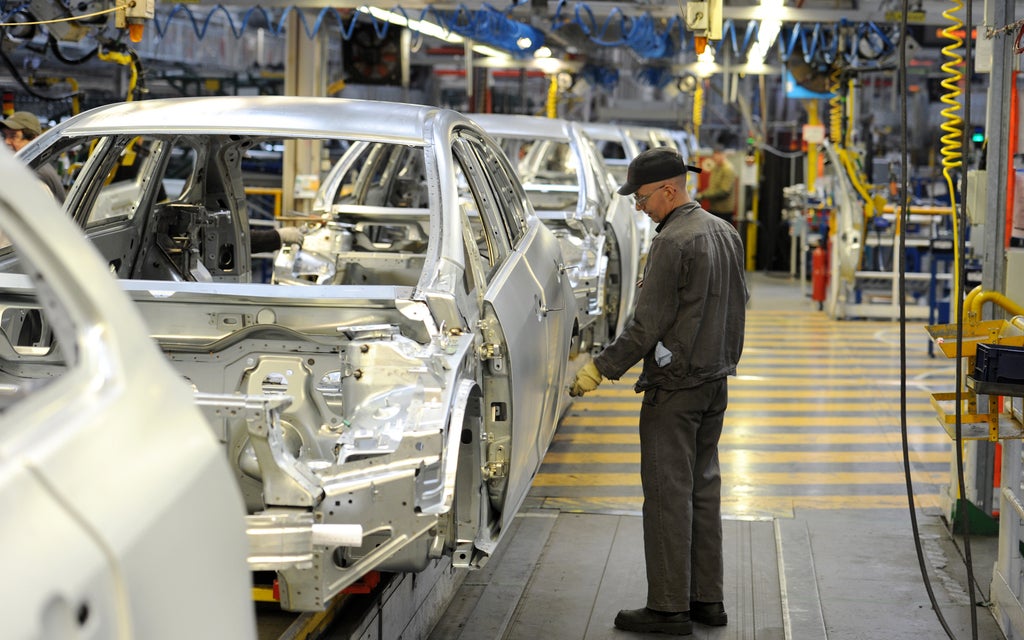
Six former transport ministers have urged Transport Secretary Grant Shapps to swiftly adopt new vehicle safety standards.
A package of 15 measures becomes mandatory in the European Union and Northern Ireland from July but will not automatically apply in Britain due to Brexit.
The changes include advanced emergency braking that detects pedestrians and cyclists, intelligent speed adaptation which discourages or prevents speeding, and systems to help drivers reverse safely.
(It) gives the UK an opportunity to reclaim its position as a world leader in vehicle safety
The cross-party former transport ministers who signed a letter calling on Mr Shapps to implement the standards – which have been heralded as the biggest advance in vehicle safety since the seat belt – were Sir Peter Bottomley, Baroness Hayman, Lord Whitty, Jim Fitzpatrick, Paul Clark and Norman Baker.
Adopting the package in its entirety is “the single most important thing you can do now to reduce deaths and injuries on UK roads” and could be done “at virtually no cost to taxpayers”, they wrote.
The signatories added that a consultation on modernising vehicle standards, launched by the Department for Transport in November 2021, “gives the United Kingdom an opportunity to reclaim its position as a world leader in vehicle safety standards and technology”.
The Parliamentary Advisory Council for Transport Safety (Pacts), which advises the Government warned that failing to introduce the 15 measures for new vehicles across the whole of the UK will “put the safety of UK road users at risk”.
Pacts executive director David Davies said the changes would “kick-start a new chapter” of road safety after “little progress” in reducing deaths and injuries in recent years.
The number of people killed on Britain’s roads each year was stable between 2010 and 2019 following three decades of decline.
A fall in fatalities in 2020 was attributed to coronavirus lockdowns.
Mr Davies added: “We support the call from former transport ministers for the Government to at least match the standards that will apply in Northern Ireland.
“It could demonstrate the UK’s new independence by going further and faster.”
The changes will apply in Northern Ireland because of a Brexit deal known as the Northern Ireland Protocol.
– Here are the 15 new vehicle standards, and what they involve.
1. Advanced emergency brakingA radar signal at the front of the vehicle continuously scans the road ahead for a potential collision.
When a risk is detected, a warning signal and alert is generated for the driver. If this is ignored, the system automatically slows the vehicle.
2. Emergency stop signalsHazard lights flash when the driver suddenly brakes.
3. Lane departure warnings and lane keeping assistanceHelps to prevent drivers accidentally leaving their lane.
4. Intelligent speed assistanceUses road sign recognition cameras and GPS to discourage or prevent speeding.
5. Driver drowsiness and attention monitoringMonitors drivers’ level of drowsiness and warns them when they should no longer be at the wheel.
6. Distraction recognition and driver readiness monitoring for automated drivingHelps keep motorists focused during automated driving.
7. Event data recordersRecords data such as speed, braking and engine throttle in the seconds before, during and after a crash.
8. Reversing safetyCameras or detection systems that help with reversing.
9. Direct visionImprove lorry and bus drivers’ vision of vulnerable road users.
10. Pedestrian and cyclist detection and warning systemsSystems on the side of lorries and buses to alert drivers to the presence of vulnerable road users.
11. Alcohol interlock installation facilitationThese systems prevent driving after consuming excess alcohol.
12. Improved car and light van protectionGreater protection for pedestrians and cyclists in the event of a crash.
13. Improved frontal impact occupant protectionProtection that does not disadvantage women and older people travelling in cars and vans.
14. Improved side impact protectionMore protection for cars and vans.
15. Tyre pressure monitoringSensors issue an alert on a vehicle’s dashboard when tyre pressures are low.







